395 items found
Page 2 of 4
-
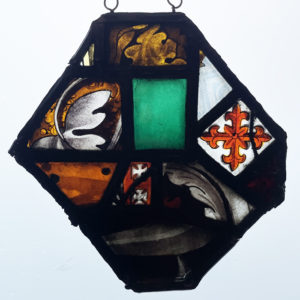
An English leaded stained glass hanger,
£290An English leaded stained glass hanger,
a polygonal light incorporating old fragments (some probably medieval): with Maltese crosses and foliate fragments, chain hung from wire loops,£290 -
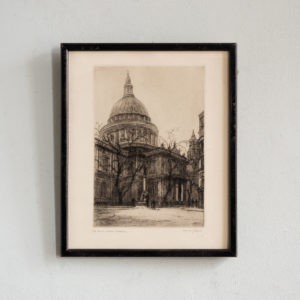
St. Pauls from Cheapside
£280St. Pauls from Cheapside
A framed pencil drawing by Dorothy Sweet showing the northern transept and part of the north quire aisle of St Pauls over St Pauls Churchyard, viewed from the the junction of Cheapside and Paternoster Row. Signed by the artist in pencil.£280 -
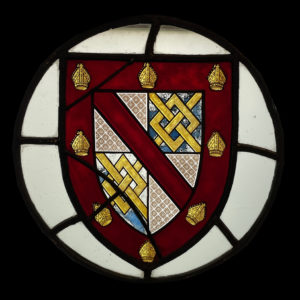
An armorial leaded and stained glass hanger,
£275An armorial leaded and stained glass hanger,
the round pane, a shield device within, the quartered field with gold 'frets' on worn blue background, gold Bishops' mitres to the red border, facing lead restorations, wire eye to the top for hanging,£275 -
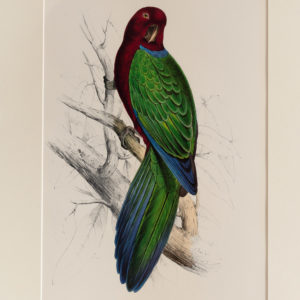
Parrots by Edward Lear – Tabuan Parrakeet,
£275Parrots by Edward Lear – Tabuan Parrakeet,
Edward Lear began his career as a zoological illustrator, working in the Parrot House at London Zoo. This resulted in the publication of Illustrations of the family of Psittacidae, or parrots, the greater part of them species hitherto unfigured in 1832. The first plates for the book were issued in 1830 when he was still only 18.£275 -
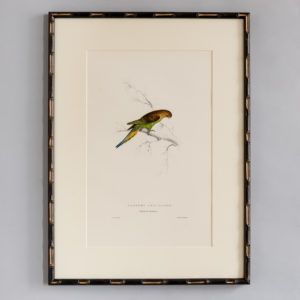
Parrots by Edward Lear – Undulated Parrakeet,
£275Parrots by Edward Lear – Undulated Parrakeet,
Edward Lear began his career as a zoological illustrator, working in the Parrot House at London Zoo. This resulted in the publication of Illustrations of the family of Psittacidae, or parrots, the greater part of them species hitherto unfigured in 1832. The first plates for the book were issued in 1830 when he was still only 18.£275 -
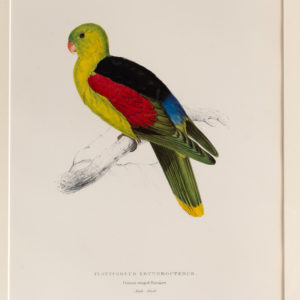
Parrots by Edward Lear – Crimson-winged Parrakeet,
£275Parrots by Edward Lear – Crimson-winged Parrakeet,
Edward Lear began his career as a zoological illustrator, working in the Parrot House at London Zoo. This resulted in the publication of Illustrations of the family of Psittacidae, or parrots, the greater part of them species hitherto unfigured in 1832. The first plates for the book were issued in 1830 when he was still only 18.£275 -
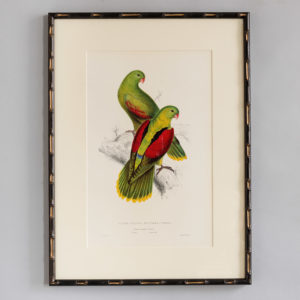
Parrots by Edward Lear – Crimson-winged Parrakeet,
£275Parrots by Edward Lear – Crimson-winged Parrakeet,
Edward Lear began his career as a zoological illustrator, working in the Parrot House at London Zoo. This resulted in the publication of Illustrations of the family of Psittacidae, or parrots, the greater part of them species hitherto unfigured in 1832. The first plates for the book were issued in 1830 when he was still only 18.£275 -
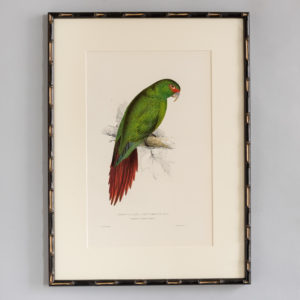
Parrots by Edward Lear – Long-billed Parrakeet-Maccaw,
£275Parrots by Edward Lear – Long-billed Parrakeet-Maccaw,
Edward Lear began his career as a zoological illustrator, working in the Parrot House at London Zoo. This resulted in the publication of Illustrations of the family of Psittacidae, or parrots, the greater part of them species hitherto unfigured in 1832. The first plates for the book were issued in 1830 when he was still only 18.£275 -
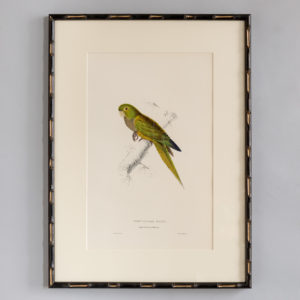
Parrots by Edward Lear – Dwarf Parrakeet Maccaw,
£275Parrots by Edward Lear – Dwarf Parrakeet Maccaw,
Edward Lear began his career as a zoological illustrator, working in the Parrot House at London Zoo. This resulted in the publication of Illustrations of the family of Psittacidae, or parrots, the greater part of them species hitherto unfigured in 1832. The first plates for the book were issued in 1830 when he was still only 18.£275 -
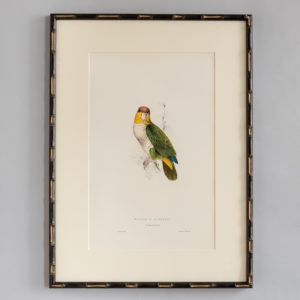
Parrots by Edward Lear – Bay-headed Parrot,
£275Parrots by Edward Lear – Bay-headed Parrot,
Edward Lear began his career as a zoological illustrator, working in the Parrot House at London Zoo. This resulted in the publication of Illustrations of the family of Psittacidae, or parrots, the greater part of them species hitherto unfigured in 1832. The first plates for the book were issued in 1830 when he was still only 18.£275 -
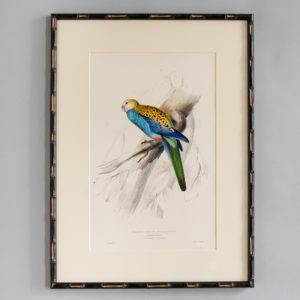
Parrots by Edward Lear – Paleheaded Parrakeet,
£275Parrots by Edward Lear – Paleheaded Parrakeet,
Edward Lear began his career as a zoological illustrator, working in the Parrot House at London Zoo. This resulted in the publication of Illustrations of the family of Psittacidae, or parrots, the greater part of them species hitherto unfigured in 1832. The first plates for the book were issued in 1830 when he was still only 18.£275 -
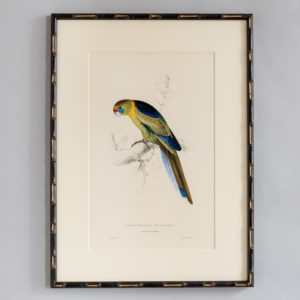
Parrots by Edward Lear – Barnard’s Parrakeet,
£275Parrots by Edward Lear – Barnard’s Parrakeet,
Edward Lear began his career as a zoological illustrator, working in the Parrot House at London Zoo. This resulted in the publication of Illustrations of the family of Psittacidae, or parrots, the greater part of them species hitherto unfigured in 1832. The first plates for the book were issued in 1830 when he was still only 18.£275 -
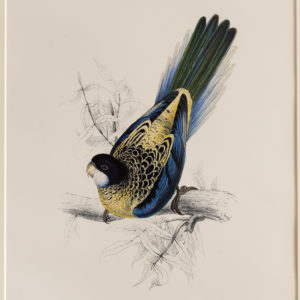
Parrots by Edward Lear – Brown’s Parrakeet,
£275Parrots by Edward Lear – Brown’s Parrakeet,
Edward Lear began his career as a zoological illustrator, working in the Parrot House at London Zoo. This resulted in the publication of Illustrations of the family of Psittacidae, or parrots, the greater part of them species hitherto unfigured in 1832. The first plates for the book were issued in 1830 when he was still only 18.£275 -
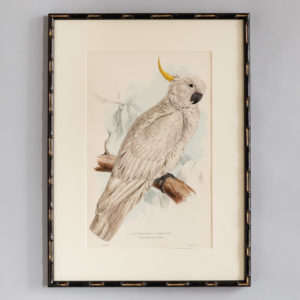
Parrots by Edward Lear – Greater Sulphur-crested Cockatoo,
£275Parrots by Edward Lear – Greater Sulphur-crested Cockatoo,
Edward Lear began his career as a zoological illustrator, working in the Parrot House at London Zoo. This resulted in the publication of Illustrations of the family of Psittacidae, or parrots, the greater part of them species hitherto unfigured in 1832. The first plates for the book were issued in 1830 when he was still only 18.£275 -
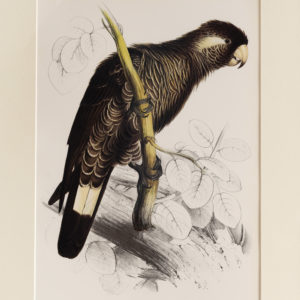
Parrots by Edward Lear – Baudin’s Cockatoo
£275Parrots by Edward Lear – Baudin’s Cockatoo
Edward Lear began his career as a zoological illustrator, working in the Parrot House at London Zoo. This resulted in the publication of Illustrations of the family of Psittacidae, or parrots, the greater part of them species hitherto unfigured in 1832. The first plates for the book were issued in 1830 when he was still only 18.£275 -
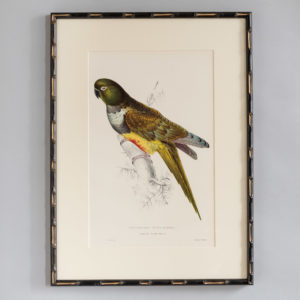
Parrots by Edward Lear – Patagonian Parrakeet-Maccaw
£275Parrots by Edward Lear – Patagonian Parrakeet-Maccaw
Edward Lear began his career as a zoological illustrator, working in the Parrot House at London Zoo. This resulted in the publication of Illustrations of the family of Psittacidae, or parrots, the greater part of them species hitherto unfigured in 1832. The first plates for the book were issued in 1830 when he was still only 18.£275 -
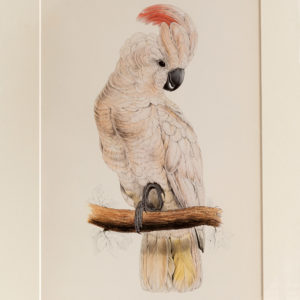
Parrots by Edward Lear – Salmon-crested Cockatoo
£275Parrots by Edward Lear – Salmon-crested Cockatoo
Edward Lear began his career as a zoological illustrator, working in the Parrot House at London Zoo. This resulted in the publication of Illustrations of the family of Psittacidae, or parrots, the greater part of them species hitherto unfigured in 1832. The first plates for the book were issued in 1830 when he was still only 18.£275 -
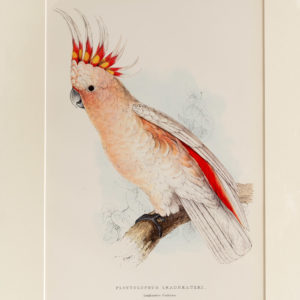
Parrots by Edward Lear – Leadbeater’s Cockatoo,
£275Parrots by Edward Lear – Leadbeater’s Cockatoo,
Edward Lear began his career as a zoological illustrator, working in the Parrot House at London Zoo. This resulted in the publication of Illustrations of the family of Psittacidae, or parrots, the greater part of them species hitherto unfigured in 1832. The first plates for the book were issued in 1830 when he was still only 18.£275 -
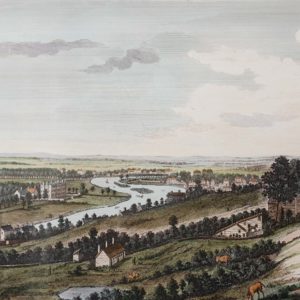
West View of Richmond from the Star & Garter
£270West View of Richmond from the Star & Garter
A framed and mounted, hand coloured engraving showing the Thames valley looking west over Richmond and Twickenham from a position besides the famous Star and Garter hotel at the top of Richmond Hill.£270 -
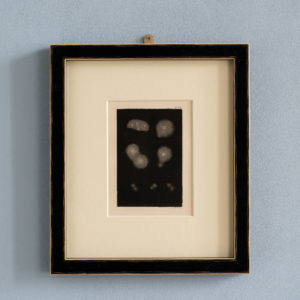
Views of the Architecture of the Heavens, by John Nichol
£250 eachViews of the Architecture of the Heavens, by John Nichol
John Pringle Nichol who, a Scottish Romantic astronomer, educator, and social reformer, who produced popular science books between 1846 and 1850. As the 5th Regius Professor of Astronomy at the University of Edinburgh , influenced the building of a large observatory beyond the city on Horselethill, paid for by the local citizens. In 1841, it was saved from financial collapse by the University. Part of the difficulties had arisen through Nichol's extravagance in purchasing unnecessarily expensive equipment. Eventually, Horselethill Observatory was kept in operation for 100 years. Nichol was a prolific writer and populariser of Astronomy; his books Contemplations on the Solar System and Views of the Architecture of the Heavens, the latter expanding on the Nebular Hypothesis, and one describing the discovery of Neptune£250 each -
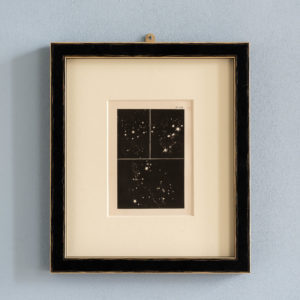
Views of the Architecture of the Heavens, by John Nichol
£250 eachViews of the Architecture of the Heavens, by John Nichol
John Pringle Nichol who, a Scottish Romantic astronomer, educator, and social reformer, who produced popular science books between 1846 and 1850. As the 5th Regius Professor of Astronomy at the University of Edinburgh , influenced the building of a large observatory beyond the city on Horselethill, paid for by the local citizens. In 1841, it was saved from financial collapse by the University. Part of the difficulties had arisen through Nichol's extravagance in purchasing unnecessarily expensive equipment. Eventually, Horselethill Observatory was kept in operation for 100 years. Nichol was a prolific writer and populariser of Astronomy; his books Contemplations on the Solar System and Views of the Architecture of the Heavens, the latter expanding on the Nebular Hypothesis, and one describing the discovery of Neptune£250 each -
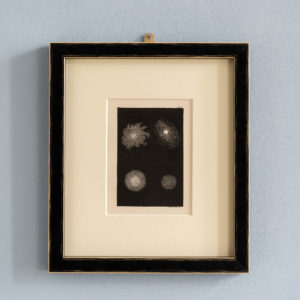
Views of the Architecture of the Heavens, by John Nichol
£250 eachViews of the Architecture of the Heavens, by John Nichol
John Pringle Nichol who, a Scottish Romantic astronomer, educator, and social reformer, who produced popular science books between 1846 and 1850. As the 5th Regius Professor of Astronomy at the University of Edinburgh , influenced the building of a large observatory beyond the city on Horselethill, paid for by the local citizens. In 1841, it was saved from financial collapse by the University. Part of the difficulties had arisen through Nichol's extravagance in purchasing unnecessarily expensive equipment. Eventually, Horselethill Observatory was kept in operation for 100 years. Nichol was a prolific writer and populariser of Astronomy; his books Contemplations on the Solar System and Views of the Architecture of the Heavens, the latter expanding on the Nebular Hypothesis, and one describing the discovery of Neptune£250 each -
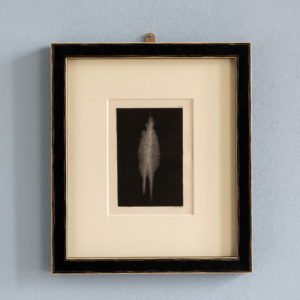
Views of the Architecture of the Heavens, by John Nichol
£250 eachViews of the Architecture of the Heavens, by John Nichol
John Pringle Nichol who, a Scottish Romantic astronomer, educator, and social reformer, who produced popular science books between 1846 and 1850. As the 5th Regius Professor of Astronomy at the University of Edinburgh , influenced the building of a large observatory beyond the city on Horselethill, paid for by the local citizens. In 1841, it was saved from financial collapse by the University. Part of the difficulties had arisen through Nichol's extravagance in purchasing unnecessarily expensive equipment. Eventually, Horselethill Observatory was kept in operation for 100 years. Nichol was a prolific writer and populariser of Astronomy; his books Contemplations on the Solar System and Views of the Architecture of the Heavens, the latter expanding on the Nebular Hypothesis, and one describing the discovery of Neptune£250 each -
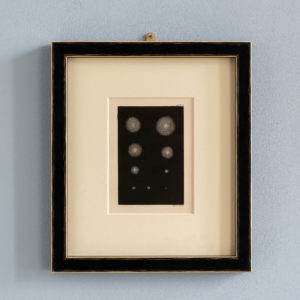
Views of the Architecture of the Heavens, by John Nichol
£250 eachViews of the Architecture of the Heavens, by John Nichol
John Pringle Nichol who, a Scottish Romantic astronomer, educator, and social reformer, who produced popular science books between 1846 and 1850. As the 5th Regius Professor of Astronomy at the University of Edinburgh , influenced the building of a large observatory beyond the city on Horselethill, paid for by the local citizens. In 1841, it was saved from financial collapse by the University. Part of the difficulties had arisen through Nichol's extravagance in purchasing unnecessarily expensive equipment. Eventually, Horselethill Observatory was kept in operation for 100 years. Nichol was a prolific writer and populariser of Astronomy; his books Contemplations on the Solar System and Views of the Architecture of the Heavens, the latter expanding on the Nebular Hypothesis, and one describing the discovery of Neptune£250 each -
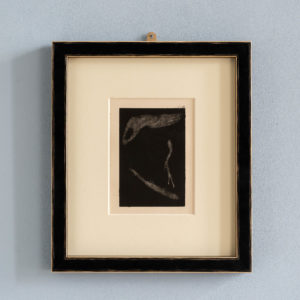
Views of the Architecture of the Heavens, by John Nichol
£250 eachViews of the Architecture of the Heavens, by John Nichol
John Pringle Nichol who, a Scottish Romantic astronomer, educator, and social reformer, who produced popular science books between 1846 and 1850. As the 5th Regius Professor of Astronomy at the University of Edinburgh , influenced the building of a large observatory beyond the city on Horselethill, paid for by the local citizens. In 1841, it was saved from financial collapse by the University. Part of the difficulties had arisen through Nichol's extravagance in purchasing unnecessarily expensive equipment. Eventually, Horselethill Observatory was kept in operation for 100 years. Nichol was a prolific writer and populariser of Astronomy; his books Contemplations on the Solar System and Views of the Architecture of the Heavens, the latter expanding on the Nebular Hypothesis, and one describing the discovery of Neptune£250 each -
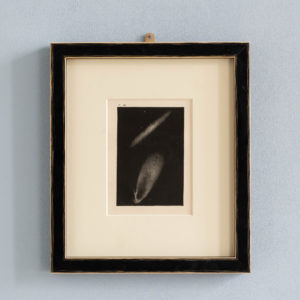
Views of the Architecture of the Heavens, by John Nichol
£250 eachViews of the Architecture of the Heavens, by John Nichol
John Pringle Nichol who, a Scottish Romantic astronomer, educator, and social reformer, who produced popular science books between 1846 and 1850. As the 5th Regius Professor of Astronomy at the University of Edinburgh , influenced the building of a large observatory beyond the city on Horselethill, paid for by the local citizens. In 1841, it was saved from financial collapse by the University. Part of the difficulties had arisen through Nichol's extravagance in purchasing unnecessarily expensive equipment. Eventually, Horselethill Observatory was kept in operation for 100 years. Nichol was a prolific writer and populariser of Astronomy; his books Contemplations on the Solar System and Views of the Architecture of the Heavens, the latter expanding on the Nebular Hypothesis, and one describing the discovery of Neptune£250 each -
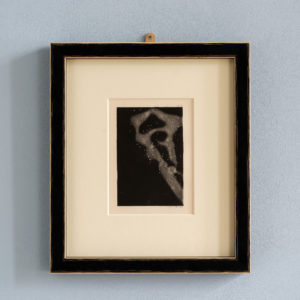
Views of the Architecture of the Heavens, by John Nichol
£250 eachViews of the Architecture of the Heavens, by John Nichol
John Pringle Nichol who, a Scottish Romantic astronomer, educator, and social reformer, who produced popular science books between 1846 and 1850. As the 5th Regius Professor of Astronomy at the University of Edinburgh , influenced the building of a large observatory beyond the city on Horselethill, paid for by the local citizens. In 1841, it was saved from financial collapse by the University. Part of the difficulties had arisen through Nichol's extravagance in purchasing unnecessarily expensive equipment. Eventually, Horselethill Observatory was kept in operation for 100 years. Nichol was a prolific writer and populariser of Astronomy; his books Contemplations on the Solar System and Views of the Architecture of the Heavens, the latter expanding on the Nebular Hypothesis, and one describing the discovery of Neptune£250 each -
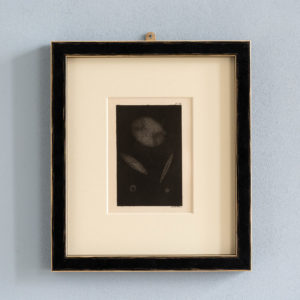
Views of the Architecture of the Heavens, by John Nichol
£250 eachViews of the Architecture of the Heavens, by John Nichol
John Pringle Nichol who, a Scottish Romantic astronomer, educator, and social reformer, who produced popular science books between 1846 and 1850. As the 5th Regius Professor of Astronomy at the University of Edinburgh , influenced the building of a large observatory beyond the city on Horselethill, paid for by the local citizens. In 1841, it was saved from financial collapse by the University. Part of the difficulties had arisen through Nichol's extravagance in purchasing unnecessarily expensive equipment. Eventually, Horselethill Observatory was kept in operation for 100 years. Nichol was a prolific writer and populariser of Astronomy; his books Contemplations on the Solar System and Views of the Architecture of the Heavens, the latter expanding on the Nebular Hypothesis, and one describing the discovery of Neptune£250 each -
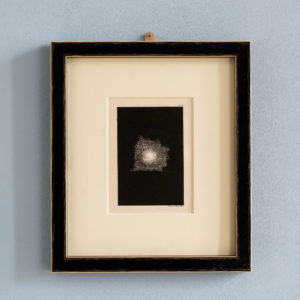
Views of the Architecture of the Heavens, by John Nichol
£250 eachViews of the Architecture of the Heavens, by John Nichol
John Pringle Nichol who, a Scottish Romantic astronomer, educator, and social reformer, who produced popular science books between 1846 and 1850. As the 5th Regius Professor of Astronomy at the University of Edinburgh , influenced the building of a large observatory beyond the city on Horselethill, paid for by the local citizens. In 1841, it was saved from financial collapse by the University. Part of the difficulties had arisen through Nichol's extravagance in purchasing unnecessarily expensive equipment. Eventually, Horselethill Observatory was kept in operation for 100 years. Nichol was a prolific writer and populariser of Astronomy; his books Contemplations on the Solar System and Views of the Architecture of the Heavens, the latter expanding on the Nebular Hypothesis, and one describing the discovery of Neptune£250 each -
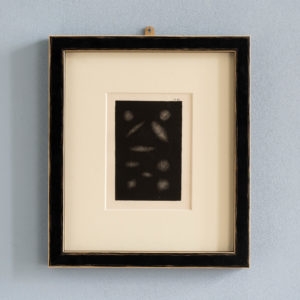
Views of the Architecture of the Heavens, by John Nichol
£250 eachViews of the Architecture of the Heavens, by John Nichol
John Pringle Nichol who, a Scottish Romantic astronomer, educator, and social reformer, who produced popular science books between 1846 and 1850. As the 5th Regius Professor of Astronomy at the University of Edinburgh , influenced the building of a large observatory beyond the city on Horselethill, paid for by the local citizens. In 1841, it was saved from financial collapse by the University. Part of the difficulties had arisen through Nichol's extravagance in purchasing unnecessarily expensive equipment. Eventually, Horselethill Observatory was kept in operation for 100 years. Nichol was a prolific writer and populariser of Astronomy; his books Contemplations on the Solar System and Views of the Architecture of the Heavens, the latter expanding on the Nebular Hypothesis, and one describing the discovery of Neptune£250 each -
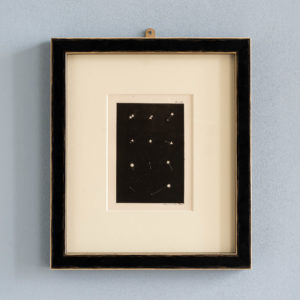
Views of the Architecture of the Heavens, by John Nichol
£250 eachViews of the Architecture of the Heavens, by John Nichol
John Pringle Nichol who, a Scottish Romantic astronomer, educator, and social reformer, who produced popular science books between 1846 and 1850. As the 5th Regius Professor of Astronomy at the University of Edinburgh , influenced the building of a large observatory beyond the city on Horselethill, paid for by the local citizens. In 1841, it was saved from financial collapse by the University. Part of the difficulties had arisen through Nichol's extravagance in purchasing unnecessarily expensive equipment. Eventually, Horselethill Observatory was kept in operation for 100 years. Nichol was a prolific writer and populariser of Astronomy; his books Contemplations on the Solar System and Views of the Architecture of the Heavens, the latter expanding on the Nebular Hypothesis, and one describing the discovery of Neptune£250 each -

Views of the Architecture of the Heavens, by John Nichol
£250 eachViews of the Architecture of the Heavens, by John Nichol
John Pringle Nichol who, a Scottish Romantic astronomer, educator, and social reformer, who produced popular science books between 1846 and 1850. As the 5th Regius Professor of Astronomy at the University of Edinburgh , influenced the building of a large observatory beyond the city on Horselethill, paid for by the local citizens. In 1841, it was saved from financial collapse by the University. Part of the difficulties had arisen through Nichol's extravagance in purchasing unnecessarily expensive equipment. Eventually, Horselethill Observatory was kept in operation for 100 years. Nichol was a prolific writer and populariser of Astronomy; his books Contemplations on the Solar System and Views of the Architecture of the Heavens, the latter expanding on the Nebular Hypothesis, and one describing the discovery of Neptune£250 each -
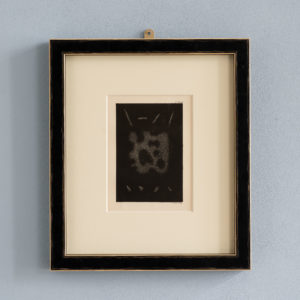
Views of the Architecture of the Heavens, by John Nichol
£250 eachViews of the Architecture of the Heavens, by John Nichol
John Pringle Nichol who, a Scottish Romantic astronomer, educator, and social reformer, who produced popular science books between 1846 and 1850. As the 5th Regius Professor of Astronomy at the University of Edinburgh , influenced the building of a large observatory beyond the city on Horselethill, paid for by the local citizens. In 1841, it was saved from financial collapse by the University. Part of the difficulties had arisen through Nichol's extravagance in purchasing unnecessarily expensive equipment. Eventually, Horselethill Observatory was kept in operation for 100 years. Nichol was a prolific writer and populariser of Astronomy; his books Contemplations on the Solar System and Views of the Architecture of the Heavens, the latter expanding on the Nebular Hypothesis, and one describing the discovery of Neptune£250 each -
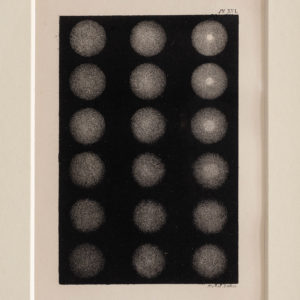
Views of the Architecture of the Heavens, by John Nichol
£250 eachViews of the Architecture of the Heavens, by John Nichol
John Pringle Nichol who, a Scottish Romantic astronomer, educator, and social reformer, who produced popular science books between 1846 and 1850. As the 5th Regius Professor of Astronomy at the University of Edinburgh , influenced the building of a large observatory beyond the city on Horselethill, paid for by the local citizens. In 1841, it was saved from financial collapse by the University. Part of the difficulties had arisen through Nichol's extravagance in purchasing unnecessarily expensive equipment. Eventually, Horselethill Observatory was kept in operation for 100 years. Nichol was a prolific writer and populariser of Astronomy; his books Contemplations on the Solar System and Views of the Architecture of the Heavens, the latter expanding on the Nebular Hypothesis, and one describing the discovery of Neptune£250 each -

Views of the Architecture of the Heavens, by John Nichol
£250 eachViews of the Architecture of the Heavens, by John Nichol
John Pringle Nichol who, a Scottish Romantic astronomer, educator, and social reformer, who produced popular science books between 1846 and 1850. As the 5th Regius Professor of Astronomy at the University of Edinburgh , influenced the building of a large observatory beyond the city on Horselethill, paid for by the local citizens. In 1841, it was saved from financial collapse by the University. Part of the difficulties had arisen through Nichol's extravagance in purchasing unnecessarily expensive equipment. Eventually, Horselethill Observatory was kept in operation for 100 years. Nichol was a prolific writer and populariser of Astronomy; his books Contemplations on the Solar System and Views of the Architecture of the Heavens, the latter expanding on the Nebular Hypothesis, and one describing the discovery of Neptune£250 each -
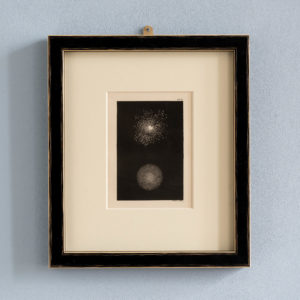
Views of the Architecture of the Heavens, by John Nichol
£250 eachViews of the Architecture of the Heavens, by John Nichol
John Pringle Nichol who, a Scottish Romantic astronomer, educator, and social reformer, who produced popular science books between 1846 and 1850. As the 5th Regius Professor of Astronomy at the University of Edinburgh , influenced the building of a large observatory beyond the city on Horselethill, paid for by the local citizens. In 1841, it was saved from financial collapse by the University. Part of the difficulties had arisen through Nichol's extravagance in purchasing unnecessarily expensive equipment. Eventually, Horselethill Observatory was kept in operation for 100 years. Nichol was a prolific writer and populariser of Astronomy; his books Contemplations on the Solar System and Views of the Architecture of the Heavens, the latter expanding on the Nebular Hypothesis, and one describing the discovery of Neptune£250 each -
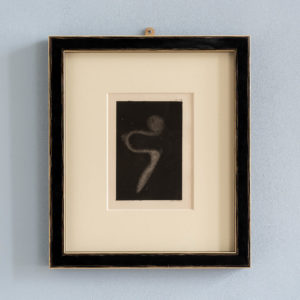
Views of the Architecture of the Heavens, by John Nichol
£250 eachViews of the Architecture of the Heavens, by John Nichol
John Pringle Nichol who, a Scottish Romantic astronomer, educator, and social reformer, who produced popular science books between 1846 and 1850. As the 5th Regius Professor of Astronomy at the University of Edinburgh , influenced the building of a large observatory beyond the city on Horselethill, paid for by the local citizens. In 1841, it was saved from financial collapse by the University. Part of the difficulties had arisen through Nichol's extravagance in purchasing unnecessarily expensive equipment. Eventually, Horselethill Observatory was kept in operation for 100 years. Nichol was a prolific writer and populariser of Astronomy; his books Contemplations on the Solar System and Views of the Architecture of the Heavens, the latter expanding on the Nebular Hypothesis, and one describing the discovery of Neptune£250 each -
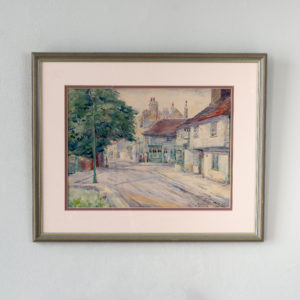
Little Church Street, Chiswick’
£250Little Church Street, Chiswick’
A signed watercolour by Josephine Ghilchick (née Matley Duddle) showing Church Lane in Chiswick, West London.£250 -
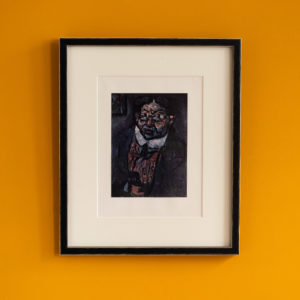
The works of George Roualt. ‘Mr. X’, 1911,
£225The works of George Roualt. ‘Mr. X’, 1911,
Although Georges Rouault a contemporary of Cubism, Expressionism and Fauvism, he never formally associated himself with any of these movements. As an independent he found his inspiration in the realities of everyday life and in religious subjects which he imbued with an authentic spirituality. Early in his career Parisian art dealer, Ambroise Vollard, bought the full contents of Georges Rouault’s studio. The artist agreed on the condition that he could finish his work at his own pace. Most of his works represented circus figures, religious subjects or landscapes.£225 -
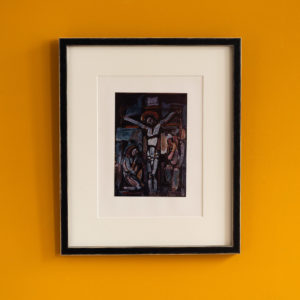
The works of George Roualt. ‘Crucifixion’, c.1918,
£225The works of George Roualt. ‘Crucifixion’, c.1918,
Although Georges Rouault a contemporary of Cubism, Expressionism and Fauvism, he never formally associated himself with any of these movements. As an independent he found his inspiration in the realities of everyday life and in religious subjects which he imbued with an authentic spirituality. Early in his career Parisian art dealer, Ambroise Vollard, bought the full contents of Georges Rouault’s studio. The artist agreed on the condition that he could finish his work at his own pace. Most of his works represented circus figures, religious subjects or landscapes.£225 -

The works of George Roualt. ‘Christ and Two Disciples’, c.1935,
£225The works of George Roualt. ‘Christ and Two Disciples’, c.1935,
Although Georges Rouault a contemporary of Cubism, Expressionism and Fauvism, he never formally associated himself with any of these movements. As an independent he found his inspiration in the realities of everyday life and in religious subjects which he imbued with an authentic spirituality. Early in his career Parisian art dealer, Ambroise Vollard, bought the full contents of Georges Rouault’s studio. The artist agreed on the condition that he could finish his work at his own pace. Most of his works represented circus figures, religious subjects or landscapes.£225 -
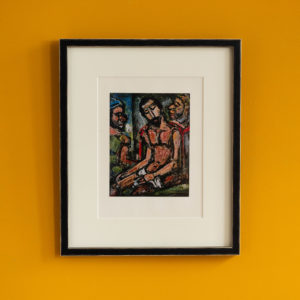
The works of George Roualt. ‘Christ Mocked by Soldiers’, 1932,
£225The works of George Roualt. ‘Christ Mocked by Soldiers’, 1932,
Although Georges Rouault a contemporary of Cubism, Expressionism and Fauvism, he never formally associated himself with any of these movements. As an independent he found his inspiration in the realities of everyday life and in religious subjects which he imbued with an authentic spirituality. Early in his career Parisian art dealer, Ambroise Vollard, bought the full contents of Georges Rouault’s studio. The artist agreed on the condition that he could finish his work at his own pace. Most of his works represented circus figures, religious subjects or landscapes.£225 -
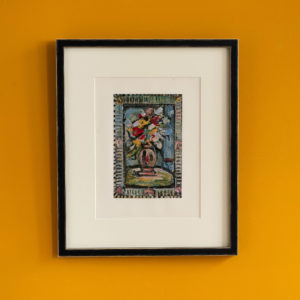
The works of George Roualt. ‘Bouquet’, c.1938,
£225The works of George Roualt. ‘Bouquet’, c.1938,
Although Georges Rouault a contemporary of Cubism, Expressionism and Fauvism, he never formally associated himself with any of these movements. As an independent he found his inspiration in the realities of everyday life and in religious subjects which he imbued with an authentic spirituality. Early in his career Parisian art dealer, Ambroise Vollard, bought the full contents of Georges Rouault’s studio. The artist agreed on the condition that he could finish his work at his own pace. Most of his works represented circus figures, religious subjects or landscapes.£225 -
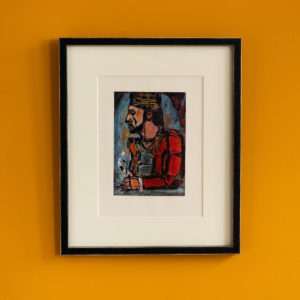
The works of George Roualt. ‘The Old King’, c.1916-36,
£225The works of George Roualt. ‘The Old King’, c.1916-36,
Although Georges Rouault a contemporary of Cubism, Expressionism and Fauvism, he never formally associated himself with any of these movements. As an independent he found his inspiration in the realities of everyday life and in religious subjects which he imbued with an authentic spirituality. Early in his career Parisian art dealer, Ambroise Vollard, bought the full contents of Georges Rouault’s studio. The artist agreed on the condition that he could finish his work at his own pace. Most of his works represented circus figures, religious subjects or landscapes.£225 -
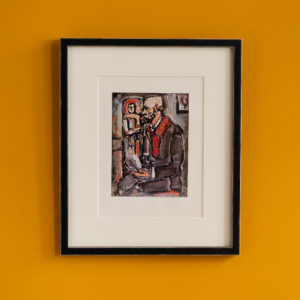
The works of George Roualt. ‘Portrait of Verlaine’, c.1938,
£225The works of George Roualt. ‘Portrait of Verlaine’, c.1938,
Although Georges Rouault a contemporary of Cubism, Expressionism and Fauvism, he never formally associated himself with any of these movements. As an independent he found his inspiration in the realities of everyday life and in religious subjects which he imbued with an authentic spirituality. Early in his career Parisian art dealer, Ambroise Vollard, bought the full contents of Georges Rouault’s studio. The artist agreed on the condition that he could finish his work at his own pace. Most of his works represented circus figures, religious subjects or landscapes.£225 -

The works of George Roualt. ‘The English Clown’, 1938-39,
£225The works of George Roualt. ‘The English Clown’, 1938-39,
Although Georges Rouault a contemporary of Cubism, Expressionism and Fauvism, he never formally associated himself with any of these movements. As an independent he found his inspiration in the realities of everyday life and in religious subjects which he imbued with an authentic spirituality. Early in his career Parisian art dealer, Ambroise Vollard, bought the full contents of Georges Rouault’s studio. The artist agreed on the condition that he could finish his work at his own pace. Most of his works represented circus figures, religious subjects or landscapes.£225 -
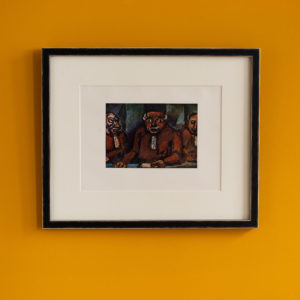
The works of George Roualt. ‘Three Judges’, 1918,
£225The works of George Roualt. ‘Three Judges’, 1918,
Although Georges Rouault a contemporary of Cubism, Expressionism and Fauvism, he never formally associated himself with any of these movements. As an independent he found his inspiration in the realities of everyday life and in religious subjects which he imbued with an authentic spirituality. Early in his career Parisian art dealer, Ambroise Vollard, bought the full contents of Georges Rouault’s studio. The artist agreed on the condition that he could finish his work at his own pace. Most of his works represented circus figures, religious subjects or landscapes.£225 -
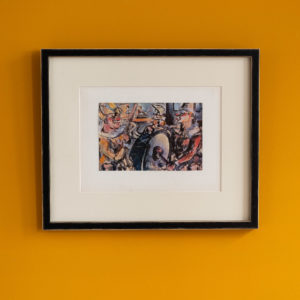
The works of George Roualt. ‘Parade’, 1907,
£225The works of George Roualt. ‘Parade’, 1907,
Although Georges Rouault a contemporary of Cubism, Expressionism and Fauvism, he never formally associated himself with any of these movements. As an independent he found his inspiration in the realities of everyday life and in religious subjects which he imbued with an authentic spirituality. Early in his career Parisian art dealer, Ambroise Vollard, bought the full contents of Georges Rouault’s studio. The artist agreed on the condition that he could finish his work at his own pace. Most of his works represented circus figures, religious subjects or landscapes.£225 -

The works of George Roualt. ‘The Humane Landscape’, 1928,
£225The works of George Roualt. ‘The Humane Landscape’, 1928,
Although Georges Rouault a contemporary of Cubism, Expressionism and Fauvism, he never formally associated himself with any of these movements. As an independent he found his inspiration in the realities of everyday life and in religious subjects which he imbued with an authentic spirituality. Early in his career Parisian art dealer, Ambroise Vollard, bought the full contents of Georges Rouault’s studio. The artist agreed on the condition that he could finish his work at his own pace. Most of his works represented circus figures, religious subjects or landscapes.£225 -
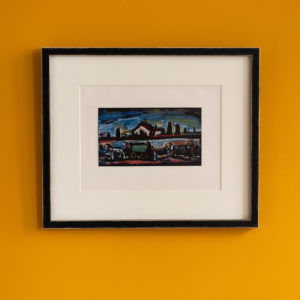
The works of George Roualt. ‘The Funeral’, 1930,
£225The works of George Roualt. ‘The Funeral’, 1930,
Although Georges Rouault a contemporary of Cubism, Expressionism and Fauvism, he never formally associated himself with any of these movements. As an independent he found his inspiration in the realities of everyday life and in religious subjects which he imbued with an authentic spirituality. Early in his career Parisian art dealer, Ambroise Vollard, bought the full contents of Georges Rouault’s studio. The artist agreed on the condition that he could finish his work at his own pace. Most of his works represented circus figures, religious subjects or landscapes.£225 -

The works of George Roualt. ‘Three Clowns’, 1917,
£225The works of George Roualt. ‘Three Clowns’, 1917,
Although Georges Rouault a contemporary of Cubism, Expressionism and Fauvism, he never formally associated himself with any of these movements. As an independent he found his inspiration in the realities of everyday life and in religious subjects which he imbued with an authentic spirituality. Early in his career Parisian art dealer, Ambroise Vollard, bought the full contents of Georges Rouault’s studio. The artist agreed on the condition that he could finish his work at his own pace. Most of his works represented circus figures, religious subjects or landscapes.£225 -
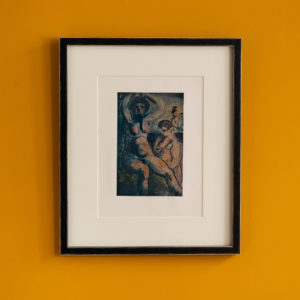
The works of George Roualt. ‘Nudes’, c.1907,
£225The works of George Roualt. ‘Nudes’, c.1907,
Although Georges Rouault a contemporary of Cubism, Expressionism and Fauvism, he never formally associated himself with any of these movements. As an independent he found his inspiration in the realities of everyday life and in religious subjects which he imbued with an authentic spirituality. Early in his career Parisian art dealer, Ambroise Vollard, bought the full contents of Georges Rouault’s studio. The artist agreed on the condition that he could finish his work at his own pace. Most of his works represented circus figures, religious subjects or landscapes.£225 -
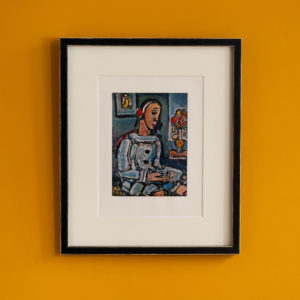
The works of George Roualt. ‘The Wise Pierrot, 1945’,
£225The works of George Roualt. ‘The Wise Pierrot, 1945’,
Although Georges Rouault a contemporary of Cubism, Expressionism and Fauvism, he never formally associated himself with any of these movements. As an independent he found his inspiration in the realities of everyday life and in religious subjects which he imbued with an authentic spirituality. Early in his career Parisian art dealer, Ambroise Vollard, bought the full contents of Georges Rouault’s studio. The artist agreed on the condition that he could finish his work at his own pace. Most of his works represented circus figures, religious subjects or landscapes.£225 -
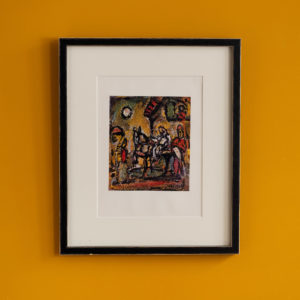
The works of George Roualt. ‘The Flight into Egypt, 1948’,
£225The works of George Roualt. ‘The Flight into Egypt, 1948’,
Although Georges Rouault a contemporary of Cubism, Expressionism and Fauvism, he never formally associated himself with any of these movements. As an independent he found his inspiration in the realities of everyday life and in religious subjects which he imbued with an authentic spirituality. Early in his career Parisian art dealer, Ambroise Vollard, bought the full contents of Georges Rouault’s studio. The artist agreed on the condition that he could finish his work at his own pace. Most of his works represented circus figures, religious subjects or landscapes.£225 -
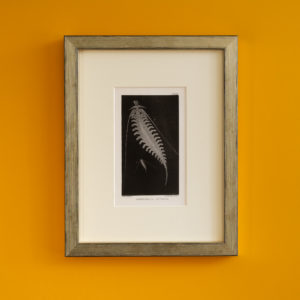
Naturalist Rambles on the Devonshire Coast, by Philip Henry Gosse. ‘Johnstonella Catharina’,
£220Naturalist Rambles on the Devonshire Coast, by Philip Henry Gosse. ‘Johnstonella Catharina’,
Living in London, Gosse's prodigious hobby of publishing work on his observations resulted in a breakdown from overwork. He was advised to go and live in the country and moved to Devon in 1853 where he wrote 'A naturalist's rambles on the Devonshire coast' The book successfully popularised the science of marine biology, but his reputation as a serious scientist later suffered with the publication of 'Omphalo' in which he refuted developmental theory, aiming to reconcile geology with the Bible's account of creation.£220 -
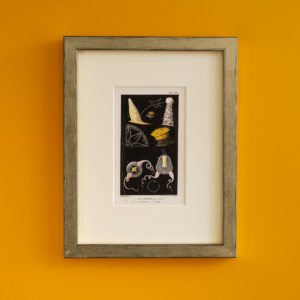
Naturalist Rambles on the Devonshire Coast, by Philip Henry Gosse. ‘Balanophylia Regia, Saphenia Titania’,
£220Naturalist Rambles on the Devonshire Coast, by Philip Henry Gosse. ‘Balanophylia Regia, Saphenia Titania’,
Living in London, Gosse's prodigious hobby of publishing work on his observations resulted in a breakdown from overwork. He was advised to go and live in the country and moved to Devon in 1853 where he wrote 'A naturalist's rambles on the Devonshire coast' The book successfully popularised the science of marine biology, but his reputation as a serious scientist later suffered with the publication of 'Omphalo' in which he refuted developmental theory, aiming to reconcile geology with the Bible's account of creation.£220 -
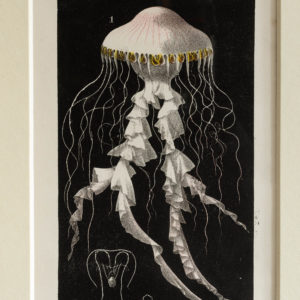
Naturalist Rambles on the Devonshire Coast, by Philip Henry Gosse. ‘Chrysaora Cyclonota’,
£220Naturalist Rambles on the Devonshire Coast, by Philip Henry Gosse. ‘Chrysaora Cyclonota’,
Living in London, Gosse's prodigious hobby of publishing work on his observations resulted in a breakdown from overwork. He was advised to go and live in the country and moved to Devon in 1853 where he wrote 'A naturalist's rambles on the Devonshire coast' The book successfully popularised the science of marine biology, but his reputation as a serious scientist later suffered with the publication of 'Omphalo' in which he refuted developmental theory, aiming to reconcile geology with the Bible's account of creation.£220 -
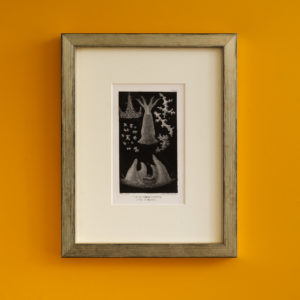
Naturalist Rambles on the Devonshire Coast, by Philip Henry Gosse. ‘Alcyonium Digitatum, Eye of Parten’,
£220Naturalist Rambles on the Devonshire Coast, by Philip Henry Gosse. ‘Alcyonium Digitatum, Eye of Parten’,
Living in London, Gosse's prodigious hobby of publishing work on his observations resulted in a breakdown from overwork. He was advised to go and live in the country and moved to Devon in 1853 where he wrote 'A naturalist's rambles on the Devonshire coast' The book successfully popularised the science of marine biology, but his reputation as a serious scientist later suffered with the publication of 'Omphalo' in which he refuted developmental theory, aiming to reconcile geology with the Bible's account of creation.£220 -
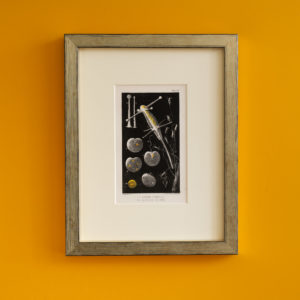
Naturalist Rambles on the Devonshire Coast, by Philip Henry Gosse. ‘Coryne Staurdial, Noctiluca Miliaris’,’,
£220Naturalist Rambles on the Devonshire Coast, by Philip Henry Gosse. ‘Coryne Staurdial, Noctiluca Miliaris’,’,
Living in London, Gosse's prodigious hobby of publishing work on his observations resulted in a breakdown from overwork. He was advised to go and live in the country and moved to Devon in 1853 where he wrote 'A naturalist's rambles on the Devonshire coast' The book successfully popularised the science of marine biology, but his reputation as a serious scientist later suffered with the publication of 'Omphalo' in which he refuted developmental theory, aiming to reconcile geology with the Bible's account of creation.£220 -
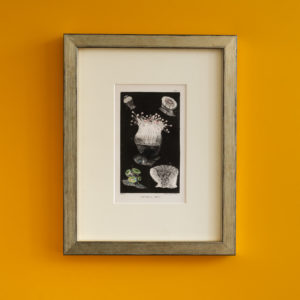
Naturalist Rambles on the Devonshire Coast, by Philip Henry Gosse. ‘Caryophyllia Smithii’,
£220Naturalist Rambles on the Devonshire Coast, by Philip Henry Gosse. ‘Caryophyllia Smithii’,
Living in London, Gosse's prodigious hobby of publishing work on his observations resulted in a breakdown from overwork. He was advised to go and live in the country and moved to Devon in 1853 where he wrote 'A naturalist's rambles on the Devonshire coast' The book successfully popularised the science of marine biology, but his reputation as a serious scientist later suffered with the publication of 'Omphalo' in which he refuted developmental theory, aiming to reconcile geology with the Bible's account of creation.£220 -
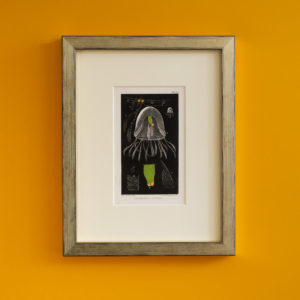
Naturalist Rambles on the Devonshire Coast, by Philip Henry Gosse. Thaumantias Corynetes,
£220Naturalist Rambles on the Devonshire Coast, by Philip Henry Gosse. Thaumantias Corynetes,
Living in London, Gosse's prodigious hobby of publishing work on his observations resulted in a breakdown from overwork. He was advised to go and live in the country and moved to Devon in 1853 where he wrote 'A naturalist's rambles on the Devonshire coast' The book successfully popularised the science of marine biology, but his reputation as a serious scientist later suffered with the publication of 'Omphalo' in which he refuted developmental theory, aiming to reconcile geology with the Bible's account of creation.£220 -
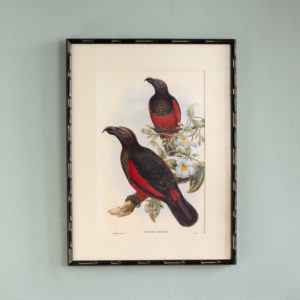
Birds of New Guinea by John Gould,
£220Birds of New Guinea by John Gould,
John Gould (1804-1881) was born in Lyme Regis, Dorset, the son of John Gould, a gardener, and his wife Elizabeth Clatworthy. Gould’s training was as a taxidermist rather than an artist, and in 1828 he was appointed animal preserver at the museum of the Zoological Society of London. In 1838-1840, Gould and his family went to the then relatively unknown continent of Australia, with the purpose of collecting and studying specimens. During his time there he discovered hundreds of new bird species and subspecies. As a result of the findings the fascinating works Birds of Australia and Mammals of Australia were published. Subsequently he was considered as the father of bird study in Australia. Gould himself did not execute finished drawings for any of his works, only providing rough pencil or watercolour sketches with notes for his artists to work from. The artists he employed included his wife Elizabeth, Edward Lear, Joseph Wolf, Henry Richter and Joseph Hart.£220 -
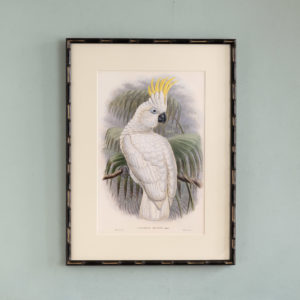
Birds of New Guinea by John Gould,
£220Birds of New Guinea by John Gould,
John Gould (1804-1881) was born in Lyme Regis, Dorset, the son of John Gould, a gardener, and his wife Elizabeth Clatworthy. Gould’s training was as a taxidermist rather than an artist, and in 1828 he was appointed animal preserver at the museum of the Zoological Society of London. In 1838-1840, Gould and his family went to the then relatively unknown continent of Australia, with the purpose of collecting and studying specimens. During his time there he discovered hundreds of new bird species and subspecies. As a result of the findings the fascinating works Birds of Australia and Mammals of Australia were published. Subsequently he was considered as the father of bird study in Australia. Gould himself did not execute finished drawings for any of his works, only providing rough pencil or watercolour sketches with notes for his artists to work from. The artists he employed included his wife Elizabeth, Edward Lear, Joseph Wolf, Henry Richter and Joseph Hart.£220 -
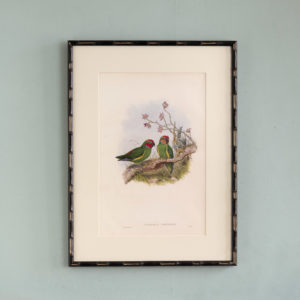
Birds of New Guinea by John Gould,
£220Birds of New Guinea by John Gould,
John Gould (1804-1881) was born in Lyme Regis, Dorset, the son of John Gould, a gardener, and his wife Elizabeth Clatworthy. Gould’s training was as a taxidermist rather than an artist, and in 1828 he was appointed animal preserver at the museum of the Zoological Society of London. In 1838-1840, Gould and his family went to the then relatively unknown continent of Australia, with the purpose of collecting and studying specimens. During his time there he discovered hundreds of new bird species and subspecies. As a result of the findings the fascinating works Birds of Australia and Mammals of Australia were published. Subsequently he was considered as the father of bird study in Australia. Gould himself did not execute finished drawings for any of his works, only providing rough pencil or watercolour sketches with notes for his artists to work from. The artists he employed included his wife Elizabeth, Edward Lear, Joseph Wolf, Henry Richter and Joseph Hart.£220 -
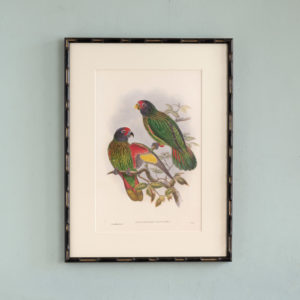
Birds of New Guinea by John Gould,
£220Birds of New Guinea by John Gould,
John Gould (1804-1881) was born in Lyme Regis, Dorset, the son of John Gould, a gardener, and his wife Elizabeth Clatworthy. Gould’s training was as a taxidermist rather than an artist, and in 1828 he was appointed animal preserver at the museum of the Zoological Society of London. In 1838-1840, Gould and his family went to the then relatively unknown continent of Australia, with the purpose of collecting and studying specimens. During his time there he discovered hundreds of new bird species and subspecies. As a result of the findings the fascinating works Birds of Australia and Mammals of Australia were published. Subsequently he was considered as the father of bird study in Australia. Gould himself did not execute finished drawings for any of his works, only providing rough pencil or watercolour sketches with notes for his artists to work from. The artists he employed included his wife Elizabeth, Edward Lear, Joseph Wolf, Henry Richter and Joseph Hart.£220 -
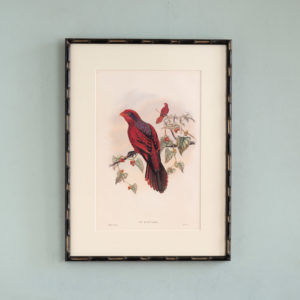
Birds of New Guinea by John Gould,
£220Birds of New Guinea by John Gould,
John Gould (1804-1881) was born in Lyme Regis, Dorset, the son of John Gould, a gardener, and his wife Elizabeth Clatworthy. Gould’s training was as a taxidermist rather than an artist, and in 1828 he was appointed animal preserver at the museum of the Zoological Society of London. In 1838-1840, Gould and his family went to the then relatively unknown continent of Australia, with the purpose of collecting and studying specimens. During his time there he discovered hundreds of new bird species and subspecies. As a result of the findings the fascinating works Birds of Australia and Mammals of Australia were published. Subsequently he was considered as the father of bird study in Australia. Gould himself did not execute finished drawings for any of his works, only providing rough pencil or watercolour sketches with notes for his artists to work from. The artists he employed included his wife Elizabeth, Edward Lear, Joseph Wolf, Henry Richter and Joseph Hart.£220 -
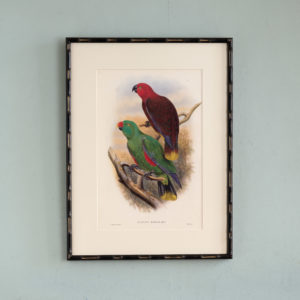
Birds of New Guinea by John Gould,
£220Birds of New Guinea by John Gould,
John Gould (1804-1881) was born in Lyme Regis, Dorset, the son of John Gould, a gardener, and his wife Elizabeth Clatworthy. Gould’s training was as a taxidermist rather than an artist, and in 1828 he was appointed animal preserver at the museum of the Zoological Society of London. In 1838-1840, Gould and his family went to the then relatively unknown continent of Australia, with the purpose of collecting and studying specimens. During his time there he discovered hundreds of new bird species and subspecies. As a result of the findings the fascinating works Birds of Australia and Mammals of Australia were published. Subsequently he was considered as the father of bird study in Australia. Gould himself did not execute finished drawings for any of his works, only providing rough pencil or watercolour sketches with notes for his artists to work from. The artists he employed included his wife Elizabeth, Edward Lear, Joseph Wolf, Henry Richter and Joseph Hart.£220 -
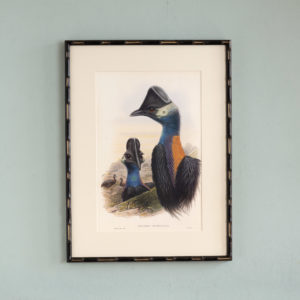
Birds of New Guinea by John Gould ,
£220Birds of New Guinea by John Gould ,
John Gould (1804-1881) was born in Lyme Regis, Dorset, the son of John Gould, a gardener, and his wife Elizabeth Clatworthy. Gould’s training was as a taxidermist rather than an artist, and in 1828 he was appointed animal preserver at the museum of the Zoological Society of London. In 1838-1840, Gould and his family went to the then relatively unknown continent of Australia, with the purpose of collecting and studying specimens. During his time there he discovered hundreds of new bird species and subspecies. As a result of the findings the fascinating works Birds of Australia and Mammals of Australia were published. Subsequently he was considered as the father of bird study in Australia. Gould himself did not execute finished drawings for any of his works, only providing rough pencil or watercolour sketches with notes for his artists to work from. The artists he employed included his wife Elizabeth, Edward Lear, Joseph Wolf, Henry Richter and Joseph Hart.£220 -
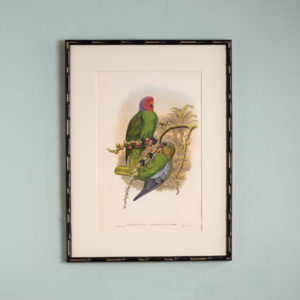
Birds of New Guinea by John Gould
£220Birds of New Guinea by John Gould
John Gould (1804-1881) was born in Lyme Regis, Dorset, the son of John Gould, a gardener, and his wife Elizabeth Clatworthy. Gould’s training was as a taxidermist rather than an artist, and in 1828 he was appointed animal preserver at the museum of the Zoological Society of London. In 1838-1840, Gould and his family went to the then relatively unknown continent of Australia, with the purpose of collecting and studying specimens. During his time there he discovered hundreds of new bird species and subspecies. As a result of the findings the fascinating works Birds of Australia and Mammals of Australia were published. Subsequently he was considered as the father of bird study in Australia. Gould himself did not execute finished drawings for any of his works, only providing rough pencil or watercolour sketches with notes for his artists to work from. The artists he employed included his wife Elizabeth, Edward Lear, Joseph Wolf, Henry Richter and Joseph Hart.£220 -
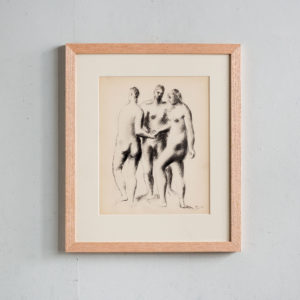
Picasso, lithographs,
£220Picasso, lithographs,
Produced for 'Editions des Chroniques du Jour' an important early work on Picasso.£220 -
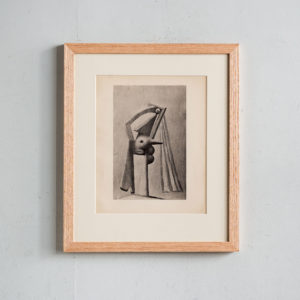
Picasso, lithographs,
£220Picasso, lithographs,
Produced for 'Editions des Chroniques du Jour' an important early work on Picasso.£220 -
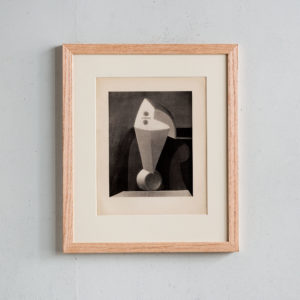
Picasso, lithographs
£220Picasso, lithographs
Produced for 'Editions des Chroniques du Jour' an important early work on Picasso.£220 -
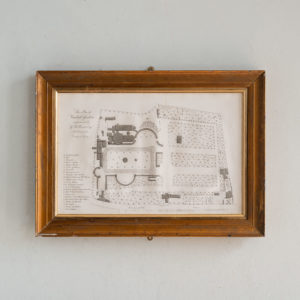
Plan of Vauxhall Gardens
£220Plan of Vauxhall Gardens
Originally engraved by William Simpkins (fl.1784-1825) for Owen Manning and William Bray’s “History and Antiquities of Surrey” (1804-1814).£220 -
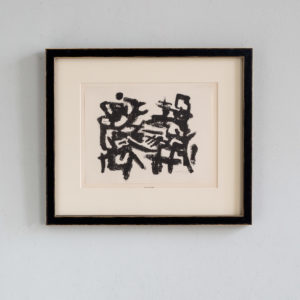
Cahiers D’Art 1953
£220Cahiers D’Art 1953
Cahiers D’Art was a journal, founded by the art critic Christian Zervos, in Paris at 14, rue du Dragon. It was published from 1926 to 1960, with a wartime interruption 1941 to 1943. Zervos was a Greek-French art historian, critic, collector, writer and publisher. The journal was noted for the quality of its articles and illustrations which unusually promoted Modern Art from all over the world rather than just Europe.£220 -
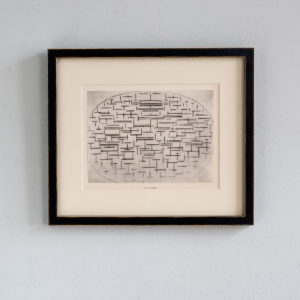
Cahiers D’Art 1953
£220Cahiers D’Art 1953
Cahiers D’Art was a journal, founded by the art critic Christian Zervos, in Paris at 14, rue du Dragon. It was published from 1926 to 1960, with a wartime interruption 1941 to 1943. Zervos was a Greek-French art historian, critic, collector, writer and publisher. The journal was noted for the quality of its articles and illustrations which unusually promoted Modern Art from all over the world rather than just Europe.£220 -
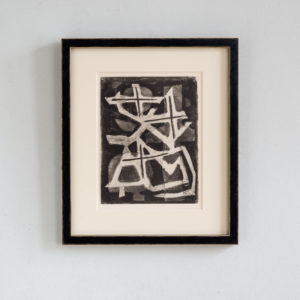
Cahiers D’Art 1953
£220Cahiers D’Art 1953
Cahiers D’Art was a journal, founded by the art critic Christian Zervos, in Paris at 14, rue du Dragon. It was published from 1926 to 1960, with a wartime interruption 1941 to 1943. Zervos was a Greek-French art historian, critic, collector, writer and publisher. The journal was noted for the quality of its articles and illustrations which unusually promoted Modern Art from all over the world rather than just Europe.£220 -
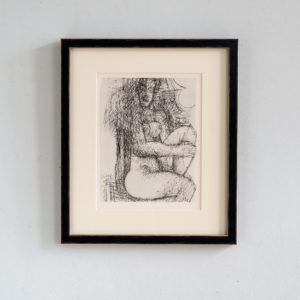
Cahiers D’Art 1953
£220Cahiers D’Art 1953
Cahiers D’Art was a journal, founded by the art critic Christian Zervos, in Paris at 14, rue du Dragon. It was published from 1926 to 1960, with a wartime interruption 1941 to 1943. Zervos was a Greek-French art historian, critic, collector, writer and publisher. The journal was noted for the quality of its articles and illustrations which unusually promoted Modern Art from all over the world rather than just Europe.£220 -
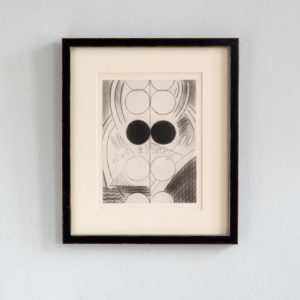
Cahiers D’Art 1953
£220Cahiers D’Art 1953
Cahiers D’Art was a journal, founded by the art critic Christian Zervos, in Paris at 14, rue du Dragon. It was published from 1926 to 1960, with a wartime interruption 1941 to 1943. Zervos was a Greek-French art historian, critic, collector, writer and publisher. The journal was noted for the quality of its articles and illustrations which unusually promoted Modern Art from all over the world rather than just Europe.£220 -
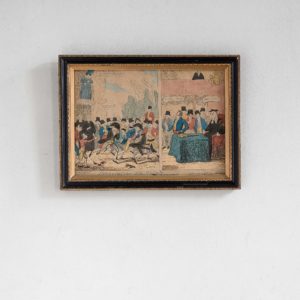
Persecution of the Saints.
£220Persecution of the Saints.
An original hand coloured etching by George Cruikshank.On 6 June 1820, Queen Caroline, estranged wife of George IV, returned from her exile on the continent, claiming her right to be crowned as Queen. The perceived harsh treatment of the Queen by the King and his Tory supporters caused her to become a figurehead for the political unrest that had been made worse by the Peterloo Massacre of 16 August 1819.In a desperate effort to rid himself of this turbulent wife George the IV ventured to have Caroline found guilty of adultery - the only legal justification for divorce at the time. All the while the King had preempitvely caused Caroline's name to be omitted from the Prayer for the Royal Family in churches throughout England.With tensions rising and both sides digging in over the contest the cause of Queen Caroline began to assume for the parties involved a symbolic and totemic significance. Queen Caroline, to the Whigs and Radicals represented injured honesty and probity in public life while her exclusion from the coronation and regal honours stood for the debasement of the constitution and the irregular, arbitrary and incompetent tyranny of the Tory loyalists. The situation was becoming so febrile that many feared political and factional violence was inevitable.Into this contest stepped William Wilberforce, the great independent MP and abolitionist campaigner. The small informal group of evangelical Christians who surrounded him in Parliament were known, perhaps mockingly, as The Saints. Wilberforce thought that by the force of his own unimpeachable integrity he could persuade Caroline to abdicate some of her rights as the Royal consort and thereby forestall what had begun to look like a revolutionary confrontation.Wilberforce attended at the Queen's residence on Portman Street in West London and presented a Motion for an Address to the Queen. He had been encouraged by Lord Brougham to believe that the Queen would accept the omission of her name from the public prayers. The Queen, standing in her rights and her honesty, flatly refused. Meanwhile the Radical London mob appears to have cajolled and roughed-up the sanctimonious delegation as they fled for their safety back to the House of Commons.As a result of the failure of Wilberforce’s attempts at mediation led to the trial of Queen Caroline and subsequent exclusion from the coronation ceremony.£220 -
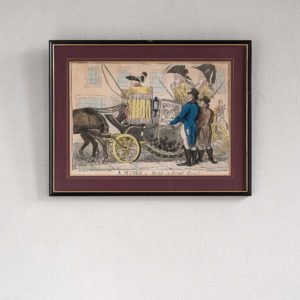
A Muddy, a Sketch in Bond Street.
£220A Muddy, a Sketch in Bond Street.
A hand coloured etching by Isaac Cruikshank. A landau coach, nicknamed a 'Muddy' bespattered with grime, halts in Bond street, as two ladies look out of the window to chat with two fashionably dressed gentlemen. The coach driver is protected by a curtained seat, and two tall liveried attendants stand at the rear, eyeing the exchange archly. Before the rise and triumphant progress of Napoleon Bonaparte sparked a patriotic reaction in Britain, the circle of caricaturists and cartoonists working in London took their aim at the perceived voluptuary tendencies of the fashionable establishment in London. The French Wars and the Revolution had led to a period of social and economic hardship in Britain which seemingly left only the wealthy and well-connected untouched. Here Isaac Cruikshank takes aim at the folly and vice of a self-indulgent set. Isaac Cruikshank was the son of a dispossessed Jacobite customs inspector. After leaving Edinburgh for London in 1783 he sustained a precarious existence as an artist and caricaturist and, along with James Gillray and Thomas Rowlandson, contributed to what has been called 'the golden age of British caricature'. Isaac Cruikshank died of alcohol poisoning after a winning a drinking contest one evening in 1811. Two of his sons Isaac Robert Cruikshank, and George Cruikshank carried on the family tradition into the middle of the 19th Century.£220 -
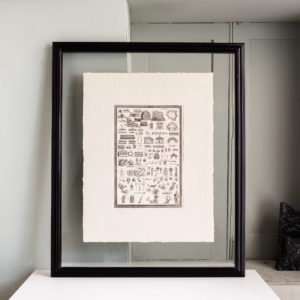
Piranesi, Diverse maniere d’adornare i cammini ed ogni altra parte degli edifizi desunte dall’architettura egizia, Etrusca e Greca,
£200Piranesi, Diverse maniere d’adornare i cammini ed ogni altra parte degli edifizi desunte dall’architettura egizia, Etrusca e Greca,
Giovanni Battista Piranesi, was an etcher, engraver, designer, architect, archaeologist, and theorist.£200 -
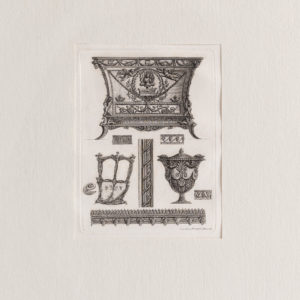
Piranesi, Designs for furniture, 1769
£200Piranesi, Designs for furniture, 1769
Giovanni Battista Piranesi, was an etcher, engraver, designer, architect, archaeologist, and theorist.£200 -
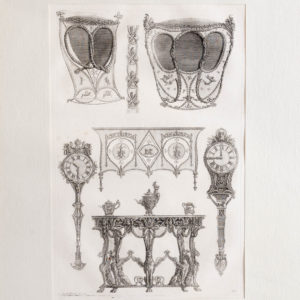
Piranesi, Designs for furniture, 1769
£200Piranesi, Designs for furniture, 1769
Giovanni Battista Piranesi, was an etcher, engraver, designer, architect, archaeologist, and theorist.£200 -
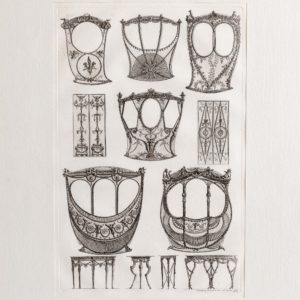
Piranesi, Designs for furniture, 1769
£200Piranesi, Designs for furniture, 1769
Giovanni Battista Piranesi, was an etcher, engraver, designer, architect, archaeologist, and theorist.£200 -
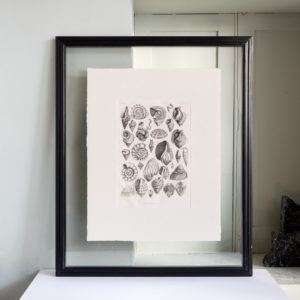
Piranesi, Different shells thought to inspire the forms of Etruscan vases, 1769
£200Piranesi, Different shells thought to inspire the forms of Etruscan vases, 1769
Giovanni Battista Piranesi, was an etcher, engraver, designer, architect, archaeologist, and theorist.£200 -
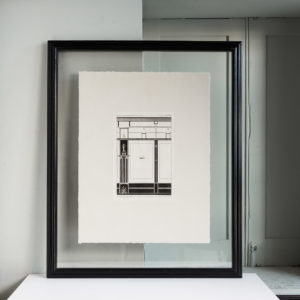
Pompei Interior, copper-engravings published 1796
£200 -
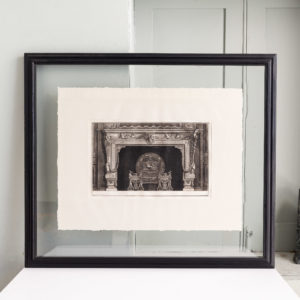
Giovanni Battista Piranesi, Design for a Fireplace, published 1769.
£200Giovanni Battista Piranesi, Design for a Fireplace, published 1769.
Giovanni Battista Piranesi, was an etcher, engraver, designer, architect, archaeologist, and theorist.£200 -
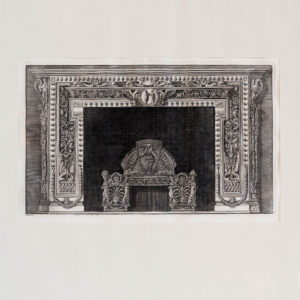
Giovanni Battista Piranesi, Design for a Fireplace, published 1769.
£200Giovanni Battista Piranesi, Design for a Fireplace, published 1769.
Giovanni Battista Piranesi, was an etcher, engraver, designer, architect, archaeologist, and theorist.£200 -
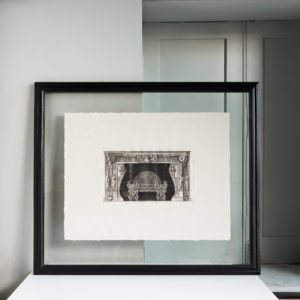
Giovanni Battista Piranesi, Design for a Fireplace, published 1769.
£200Giovanni Battista Piranesi, Design for a Fireplace, published 1769.
Giovanni Battista Piranesi, was an etcher, engraver, designer, architect, archaeologist, and theorist.£200 -
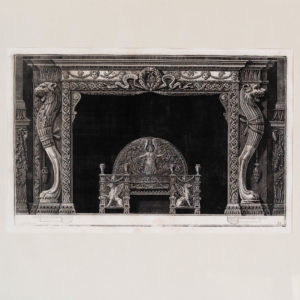
Giovanni Battista Piranesi, Design for a Fireplace, published 1769.
£200Giovanni Battista Piranesi, Design for a Fireplace, published 1769.
Giovanni Battista Piranesi, was an etcher, engraver, designer, architect, archaeologist, and theorist.£200 -
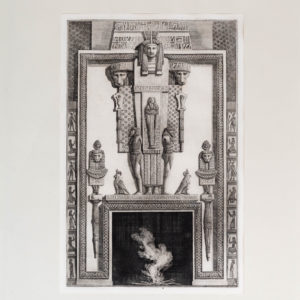
Giovanni Battista Piranesi, Design for an Egyptian style Fireplace, published 1769.
£200Giovanni Battista Piranesi, Design for an Egyptian style Fireplace, published 1769.
Giovanni Battista Piranesi, was an etcher, engraver, designer, architect, archaeologist, and theorist.£200 -
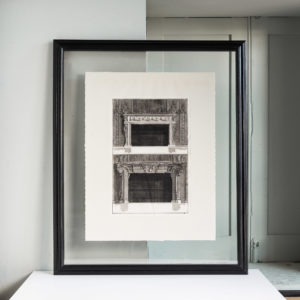
Giovanni Battista Piranesi, Designs for two Fireplaces, published 1769.
£200Giovanni Battista Piranesi, Designs for two Fireplaces, published 1769.
Giovanni Battista Piranesi, was an etcher, engraver, designer, architect, archaeologist, and theorist.£200 -
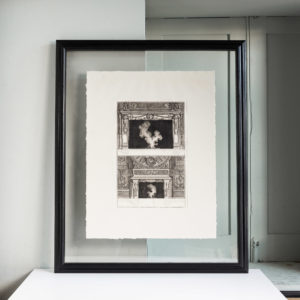
Giovanni Battista Piranesi, Designs for two Fireplaces, published 1769.
£200Giovanni Battista Piranesi, Designs for two Fireplaces, published 1769.
Giovanni Battista Piranesi, was an etcher, engraver, designer, architect, archaeologist, and theorist.£200 -
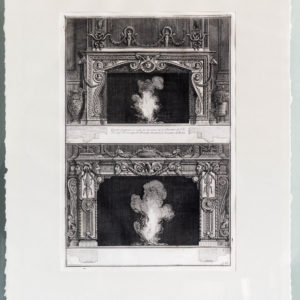
Giovanni Battista Piranesi, Designs for two Fireplaces, published 1769.
£200Giovanni Battista Piranesi, Designs for two Fireplaces, published 1769.
Giovanni Battista Piranesi, was an etcher, engraver, designer, architect, archaeologist, and theorist.£200 -
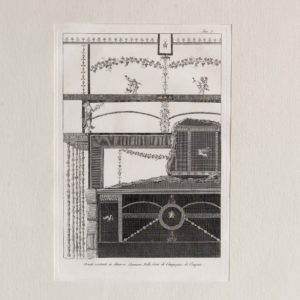
Pompei Interior, copper-engravings published 1796
£200 -
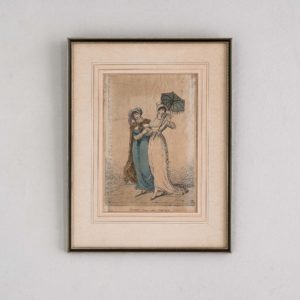
Seven Shilling Pieces
£200Seven Shilling Pieces
A hand coloured Georgian satire on the cost of female companionship at the Covent Garden Opera. Two courtesans fashionably dressed in the style of the period are shown arm-in-arm, walking along a pavement. One (right) holds up an open sunshade and a card inscribed 'Miss Oldprice Covent Garden'.£200 -
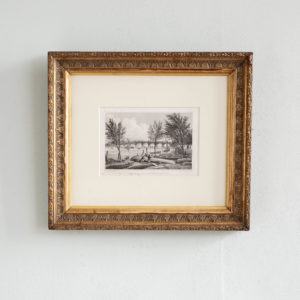
Vauxhall Bridge from Mill Bank
£195Vauxhall Bridge from Mill Bank
Vauxhall Bridge as viewed from Millbank in 1826. The bridge was begun in 1811 and opened to the public in August 1816.£195 -
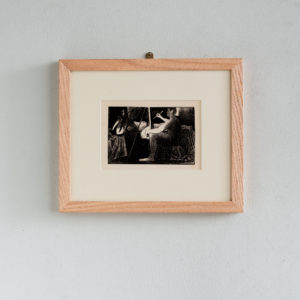
Picasso, lithographs from 1930
£195Picasso, lithographs from 1930
Produced for 'Editions des Chroniques du Jour' an important early work on Picasso.£195 -
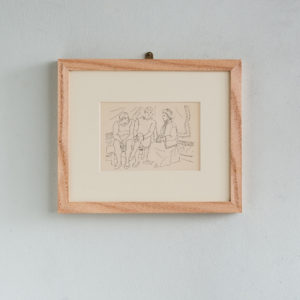
Picasso, lithographs from 1930
£195Picasso, lithographs from 1930
Produced for 'Editions des Chroniques du Jour' an important early work on Picasso.£195 -
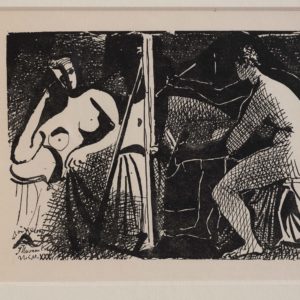
Picasso, lithographs from 1930
£195Picasso, lithographs from 1930
Produced for 'Editions des Chroniques du Jour' an important early work on Picasso.£195
Featured Items
-
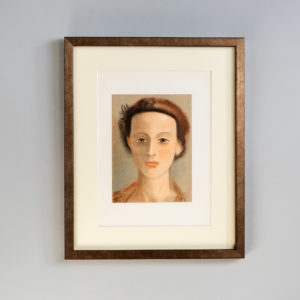
Portrait by Andre Derain, Verve Vol 2 / No. 5-6.
£800Portrait by Andre Derain, Verve Vol 2 / No. 5-6.
The Verve Review was a purposefully luxurious. It ran from 1937 to 1960, but with only 38 editions available, due to the high degree of design and editorial work dedicated to each issue. Each edition contained unique lithographic prints, commissioned by the editor, and each cover a double-page lithograph elaborated by one of the artists contained within. It was the brainchild of its editor Stratis Eleftheriades, a Greek National who moved to Paris in the early thirties to take part in the growing Modernist movement, writing under the name of Teriade.£800 -
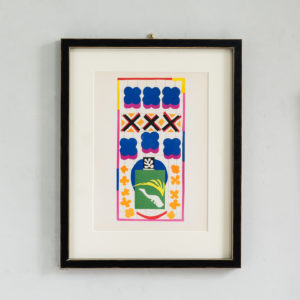
Henri Matisse, ‘The Last Works of Henri Matisse’
£900 eachHenri Matisse, ‘The Last Works of Henri Matisse’
From Verve Vol. IX No. 35/36 published by Tériade under the title 'The Last Works of Henri Matisse'£900 each -
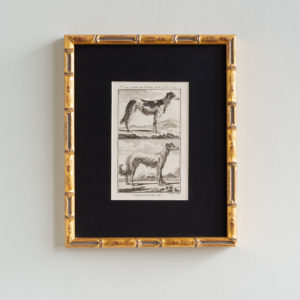
18th Century French Engravings of Dogs
£175 each18th Century French Engravings of Dogs
Published for, Histoire naturelle, générale et particulière (1749–1804), which was the first modern attempt to systematically present all existing knowledge in the fields of natural history, geology, and anthropology.£175 each -
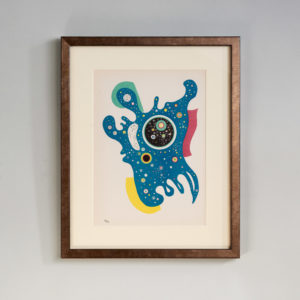
Stars by Wassily Kandinsky, Verve Vol. 1 / No. 2.
£800Stars by Wassily Kandinsky, Verve Vol. 1 / No. 2.
The Verve Review was a purposefully luxurious. It ran from 1937 to 1960, but with only 38 editions available, due to the high degree of design and editorial work dedicated to each issue. Each edition contained unique lithographic prints, commissioned by the editor, and each cover a double-page lithograph elaborated by one of the artists contained within. It was the brainchild of its editor Stratis Eleftheriades, a Greek National who moved to Paris in the early thirties to take part in the growing Modernist movement, writing under the name of Teriade.£800
